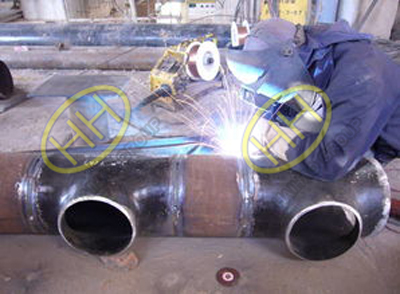Common welding methods for pressure pipelines
Metal pipeline welding methods can be classified into three main categories based on the nature of the weld metal joint: fusion welding, pressure welding, and brazing.
Fusion welding involves heating the joint to a molten state without applying pressure to complete the welding process. Under heating conditions, the atomic energy of the metal is enhanced, promoting diffusion between atoms. When the metal to be welded is heated to a molten state to form a liquid pool, atoms can fully diffuse and make close contact. Upon cooling and solidification, a strong weld joint is formed. Fusion welding methods vary according to the heat source, including gas welding, aluminum thermal welding, arc welding, submerged arc welding, electroslag welding, electron beam welding, and laser welding.
Pressure welding requires applying pressure to the weld joint during the welding process, with or without heating, to complete the welding. There are two forms of pressure welding: one involves heating the contact parts of the welded metal to a plastic state or partial melting state, then applying pressure to form a solid weld joint. Examples include forge welding, resistance welding, friction welding, and pressure gas welding. The other form involves applying sufficient pressure to the contact surface of the welded metal without heating, using plastic deformation caused by pressure to bring atoms closer together and achieve a solid joint. Methods include cold pressure welding and explosion welding (mainly used for composite steel plates).
Brazing is a method of joining welded components using metal materials with lower melting points than the base metal. The welding process involves heating the joint and brazing material to a temperature above the melting point of the brazing material but below the melting point of the base metal. The liquid brazing material wets the base metal, fills the gap between the joints, and diffuses with the base metal to achieve joint bonding. Common brazing methods include soldering and flame brazing.
Non-metallic pipeline welding mainly refers to the welding of plastic pipes in organic non-metallic materials. The welding method uses fusion connection, where connecting plastic pipe fittings and/or plastic welding rods are heated to a molten state, pressed together (the pressure depends on the type of plastic), and fused. Methods include hot air welding, hot melt butt welding, and electric fusion welding. Hot air welding is mainly used for welding PVC, polyolefin, polyformaldehyde, and nylon plastics, and can also be used for welding polystyrene, ABS, polycarbonate, chlorinated polyether, and chlorinated polyethylene plastics. Hot melt butt welding and electric fusion welding are mainly used for PE pipe welding.
Common welding methods for pressure pipelines include shielded metal arc welding (SMAW), submerged arc welding (SAW), gas tungsten arc welding (GTAW), gas metal arc welding (GMAW), flux-cored arc welding (FCAW), plasma arc welding (PAW), and oxy-fuel welding (OFW) for metal pipelines, and hot melt butt welding and electric fusion welding for PE pipelines.

